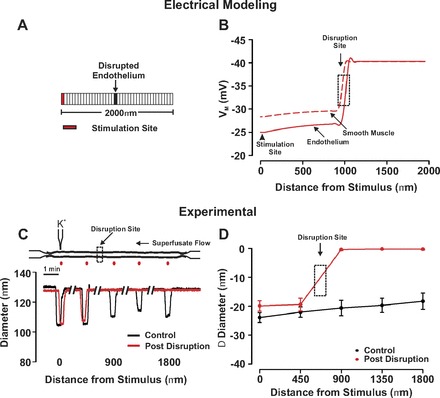Fig. 3.

Endothelium is the principal pathway for conduction. A and B: for simulations, 1 arterial segment of endothelium was voltage clamped 15 mV positive to the resting Vm (−40 mV, 200 ms) while steady state Vm was monitored in a virtual artery when 1 arterial segment of endothelium was disrupted. C and D: for experimentation, KCl (250 mM) was pressure ejected onto a small region of a fifth-order mesenteric artery. Vasomotor responses were monitored at sites 0, 450, 900, 1,350, and 1,800 μm distal to the point of agent application under control conditions (black) and following focal endothelial disruption (red) at a site positioned ∼900 μm from the stimulus pipette. A representative trace and summary data are in C and D, respectively. Resting, minimal, and maximal diameters were as follows (n = 6): 89 ± 5 μm; 27 ± 4 μm; 129 ± 8 μm.
